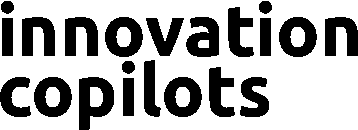I'm going down from 3,000 to 1,000 subscribers

This weekend, I'm cleaning up my newsletter, culling my subscriber list from +3,000 to a neat 1,000. I do that every 6 months or so, and it might seem weird or plain counterintuitive. Let me explain...
Most web-based businesses (or regular businesses like mine with a significant web-based outreach strategy) share the same logic. Build content that is good enough to generate as much traffic as possible on your various sites (LinkedIn and www.icopilots.com in my case) and try to transform some of it into real business.
So far, so good.
The idea is that you are fighting in a lot of background noise, and when you have more or less 10,000 random hits, you will generate 1,000 'qualified' hits, among which you will be able to engage about a dozen to make one sale eventually. There's a problem right there, though, because this implies that your business is primarily a commodity with scant added value (if any), mostly fighting over the same topics with a purely price-based strategy.
I take issue with this premise.
Let's do the maths another way: to sustain my business, I need to have a highly involved and qualified discussion with about 20 potential customers a year, with whom I will have an 80% transformation rate (i.e., making business with them). To get there, I need to 'hit' about 100 of them initially with a topic of interest that is a) sharp, b) on time for them, and c) on which I demonstrate enough preliminary competencies and differentiation that they feel they won't lose time connecting with me.
This is not solved by broadcasting tons of clickbait, hyper-general stuff to maximize the initial number of persons with a vague interest in me, but rather by narrowing down as much as possible what I'm talking about and who is concerned.
In my business, being broadly appealing is detrimental.
And there's a price to pay. Like, I can't sell cookie-cutter innovation training, hitting the current buzzwords on 'how AI will impact your business' while being benchmarked on how cheaply I can deliver an 8- or 32-hour program. This means letting go of the relatively boring stuff, but also of most of where the business is at.
Then again, cut the stuff with no added value, and you have to become very specific on your skills and what you deliver. In this mode, all the marketing and branding is done beforehand. Ideally (emphasis on ideally), when it finally works, you get contacted by your niche market with precise asks. But to get there, you need to make some sacrifices without knowing if you'll get there.
With all this in mind, culling vague connections or newsletter readers who don't really open it, or who did so one or two years ago, is risky. The risk is losing some random opportunity that could appear out of nowhere. What you gain, though, is more focus on your active readers and audience, knowing more precisely what they want to talk about, what "hits the spot" for them in the current market configuration.
Having a less diluted feedback loop is much more important to me than hitting some abstract big number of followers or subscribers – not that I'm sure I could anyway. I could work on being a Top Voice on LinkedIn, but to what avail? I'll always be outcompeted by smart influencers overusing GPTs to vomit business slop.
The notion of having a narrow/deep focus is not new. It's often drowned in the noise of all the miracle, yet cheap, SEO theories and get-you-rich-within-a-month business hacks. Seth Godin, among others, was talking early on about your smallest viable market:
Stake out the smallest market you can imagine. The smallest market that can sustain you, the smallest market you can adequately serve. This goes against everything you learned in capitalism school, but in fact, it’s the simplest way to matter.
When you have your eyes firmly focused on the minimum viable audience, you will double down on all the changes you seek to make. Your quality, your story and your impact will all get better.
I should reboot my Consulting Newsletter, launched two years ago, where I tried to process all this into a workable theory. In the part about growing your community, I wrote:
As consultants with differentiated expertise, we need to approach the market differently. The golden zone we want to be in is having a potential customer who knows us asking for advice on working with us because she gets our value. This incidentally means a totally different approach from cold calling, where we aim for much fewer contacts in exchange for an 80% success rate in getting a mission.
Following this, I was pointing at the idea of selling without selling:
The core idea is to use what I classify as "passive" sales mode or selling without selling. What passive means is that we never want to be in the position of actively pitching much of anything to anyone. What we want is for our value to be perceived passively and yet very clearly by targeted profiles. Getting there will be a very active job!
But that would bring us too deeply into this rabbit hole for today, AND I don't want to pose as a marketing genius, whereas I'm still merely trying to make sense of what has been working for me, becoming a modest but relatively stable service business in an overcrowded field.
Oh, and if I cut you out of the newsletter this week and you're upset about it... Well, it's good news. It means I made a mistake. You were of my content and were looking forward to rereading it. 😅
Hit subscribe here, and I promise I won't cut anyone out until the end of next year. 😇



